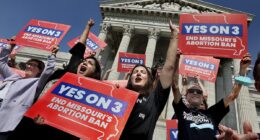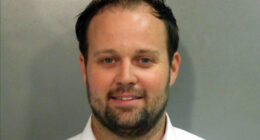Yom Kippur is the holiest day in the Jewish calendar: in Israel, nearly half of the country fasts and refrains from using electricity. But for those not headed to the synagogue, an alternative Yom Kippur tradition has emerged in recent years.
As the sun went down on Sunday evening, Tel Aviv, Israel’s cosmopolitan and largely secular Mediterranean city, slowly came to a standstill. For about 24 hours, the streets – normally groaning with traffic – become a paradise for cyclists and those on rollerblades, skateboards and scooters. The din of car horns is replaced by bicycle bells, birdsong, and the crashing of waves on the beach. Some people seize the opportunity to cycle from city to city on what are normally snarled motorways across the country.
“This is a magic day. It’s still holy and a day for contemplation, but we use the quiet in a different way,” said Sarit Abraham, a 44-year-old working in hospital administration from the suburb of Ramat Gan. She and her three children had cycled about 7 miles (12km) around the city’s parks and seafront, she estimated on Monday morning, and would have a picnic on the beach before heading home.
In Israel, every Friday before sunset, public transport is suspended for Shabbat: Jewish believers turn off their mobile phones, and refrain from anything that could resemble work. While some neighbourhoods of Jerusalem turn into ghost towns, many shops and restaurants in Tel Aviv remain open, and there can still be heavy traffic on Highway One, the main road connecting the two cities.

There’s no law banning driving on Yom Kippur – the annual day of atonement for sins against God – but even in cities with mixed Jewish and Arab populations, such as Jaffa, south of Tel Aviv, almost everyone refrains from using the car: the Guardian did not see a single motor vehicle on the road on Monday other than an ambulance and a handful of police cars.
Cultural differences in observing Shabbat and other Jewish holidays can often lead to tensions between Israel’s secular and more religious communities but, for the most part, cycling on Yom Kippur is seen as in keeping with the spirit of the holiday.
Other than the summer heat, the flat coastal city is perfect for biking. In the last 25 years, the local municipality, under the leadership of its mayor, Ron Huldai, has embraced the green mode of transport, building 87 miles (140km) of bike lanes and paths – and even if some are not much more than paint on the concrete, or break off haphazardly at junctions, they have still transformed the city’s transport culture. As is the case in many cities, as the number of cyclists has gone up, the number of road traffic accidents has gone down.
READ RELATED: The Benefits of Lactic Acid for Skin Go Beyond Exfoliation
In 2022, the greater metropolitan area was home to 4.4 million people. The first line on the long-awaited Tel Aviv light rail was inaugurated last month, but it will be at least another decade before the city can rely on it as the backbone of its urban transportation system. Yet in 1994, the Israel Bicycle Association was laughed out of the room when it approached the council to discuss making the traffic-jam-prone city more friendly to cyclists.

“They were told that cycling was something for third world nations and Tel Aviv is a modern city,” Yotam Avizohar, the association’s director, previously told the Guardian. Another official told the cycling enthusiasts that the mode of transport was for European countries.
“Israel is a Middle-Eastern country and Israelis are addicted to their cars or to their camels,” he said.
He did not see how it could ever be changed, Avizohar added. “We have achieved a lot but it still remains a big challenge to break the ‘car first’ mentality.”
Since then, cycling in Tel Aviv has flourished: the number of bike lanes is expected to double by 2025, as part of plans to increase the amount of journeys taken by bike in the city from 7% to 20%.
On Monday morning, many people said they would cycle more often if they had the chance and there was less motor traffic in the city.
“We had bikes when I was a little girl, and I love using my bike now,” said Dror Kressel, a 70-year-old out on an electric bike with her son and daughter-in-law. “I wish every day of the year could be like this.”





